(www.MaltaFauna.com)
| Tetranychus urticae C. L. Koch, 1836 |
| Taxonomical Classification: Animalia / Arthropoda / Insecta / Trombidiformes / Tetranychidae |
| |
| Further Information: The two-spotted spider mite is a common pest feeding and invading plants. It can be found in two forms, yellowish with two (or one) black spots or red. It is hence sometimes called as the red spider mite too. This mite is only 0.4mm in size and so barely seen with the naked eye. However they are often found in visible colonies. They wonder around the entire plant but mostly found at the axils and the abaxial surface of leaves. They also spin a very delicate web when they are in large numbers. Tetranychus urticae can feed on hundreds of plants including most vegetables and food crops (peppers, tomatoes, potatoes, beans, maize, strawberries and ornamental plants) . It lays its eggs on the leaves, and it poses a threat to host plants by sucking cell contents from the leaves cell by cell, leaving tiny pale spots or scars where the green epidermal cells have been destroyed. Although the individual lesions are very small, attack by hundreds or thousands of spider mites can cause thousands of lesions and thus can significantly reduce the photosynthetic capability of plants. They lay numerous eggs which are resistant to most miticides, hence two or 3 applicaions at 5-7day intervals is the normal recommended application to get rid of the pest from the plants. Apart from chemical applications, the mite's natural predator, Phytoseiulus persimilis, is also commonly used as a biologically control method. T. urticae is the only animal (apart few Aphids) known to be able to synthesise carotenoids where the genes for carotene synthesis appear to have been acquired through horizontal gene transfer from a fungus. |
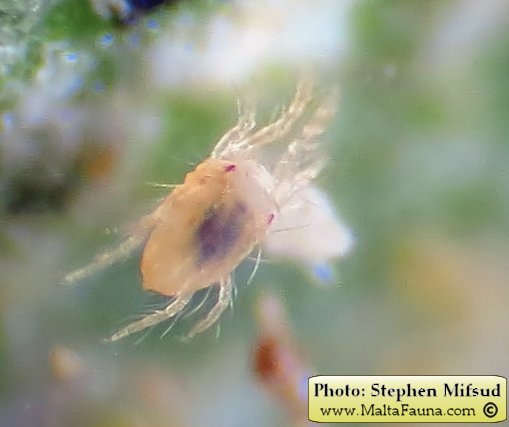 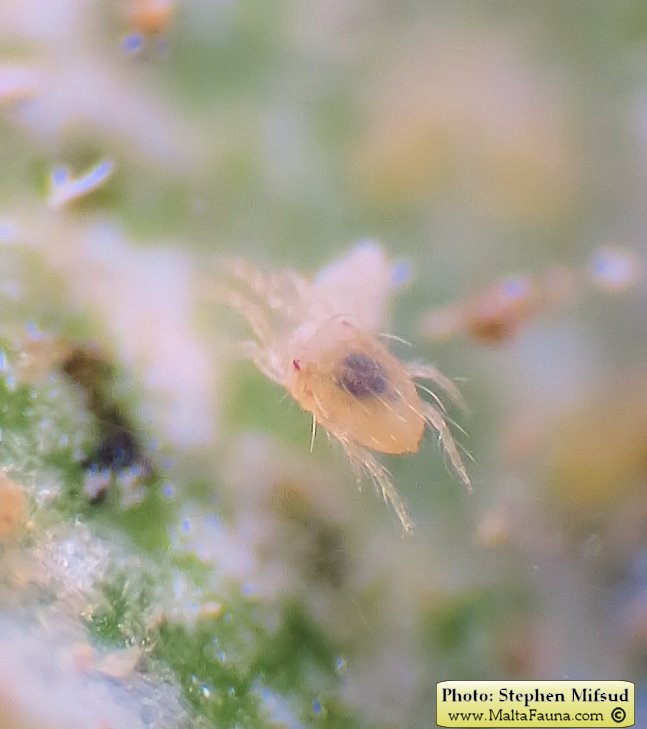 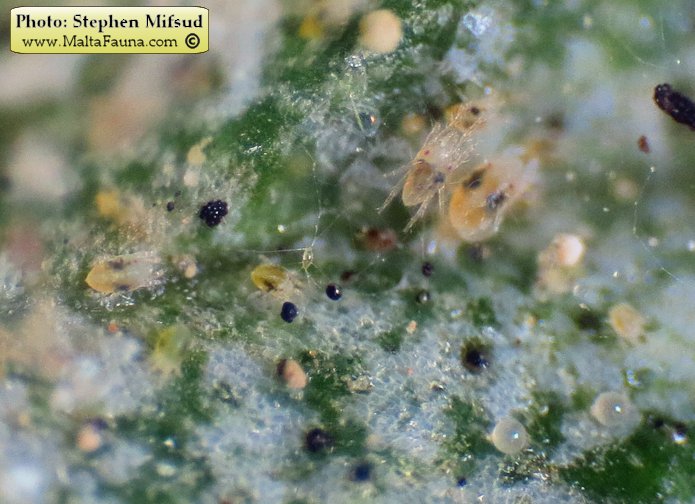  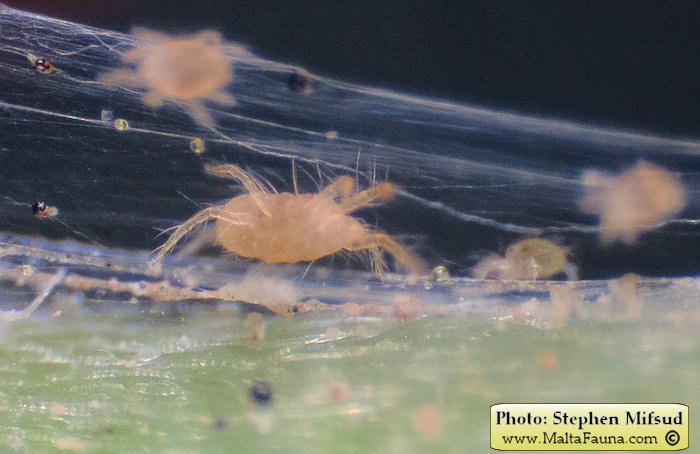 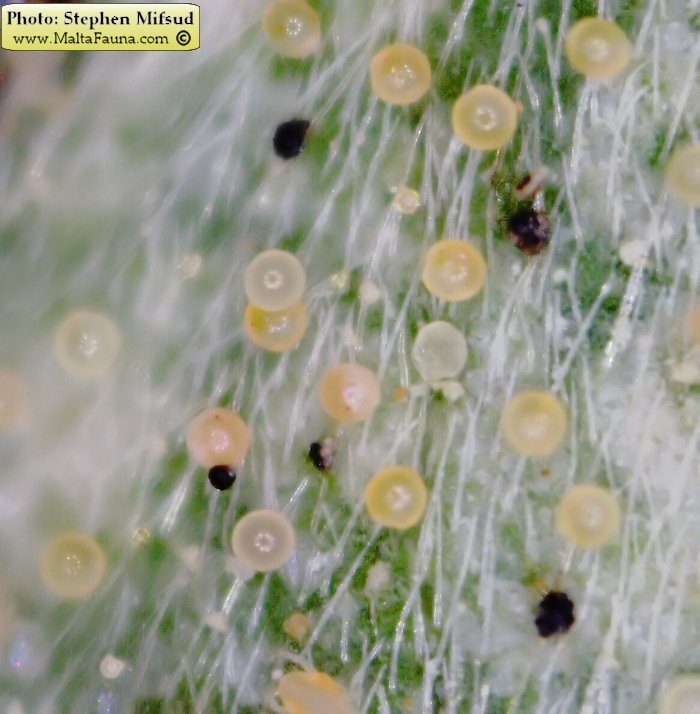 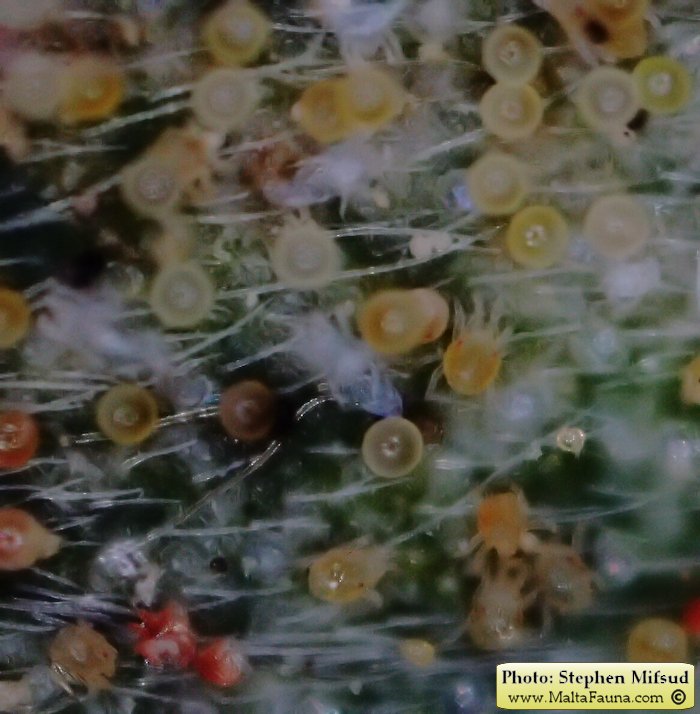 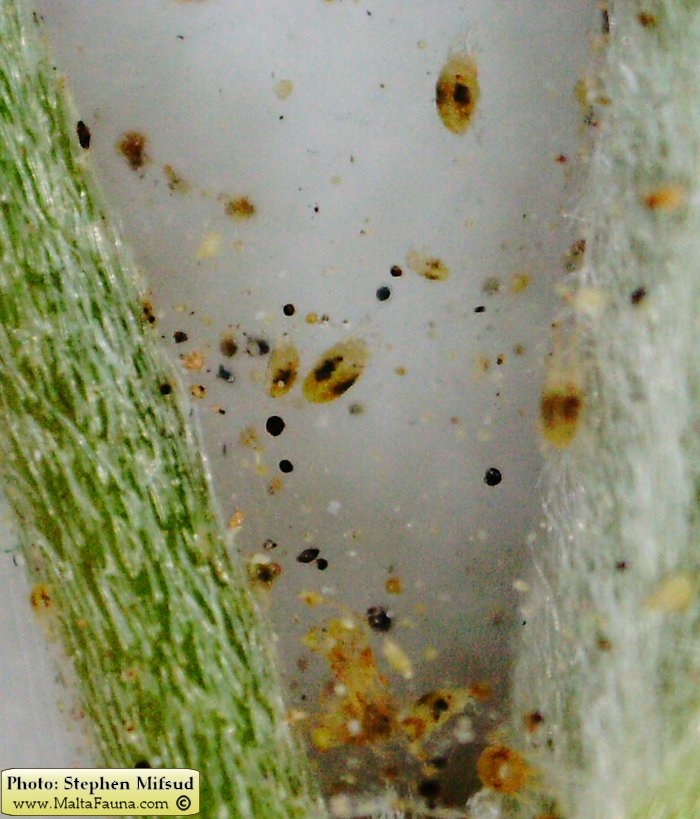 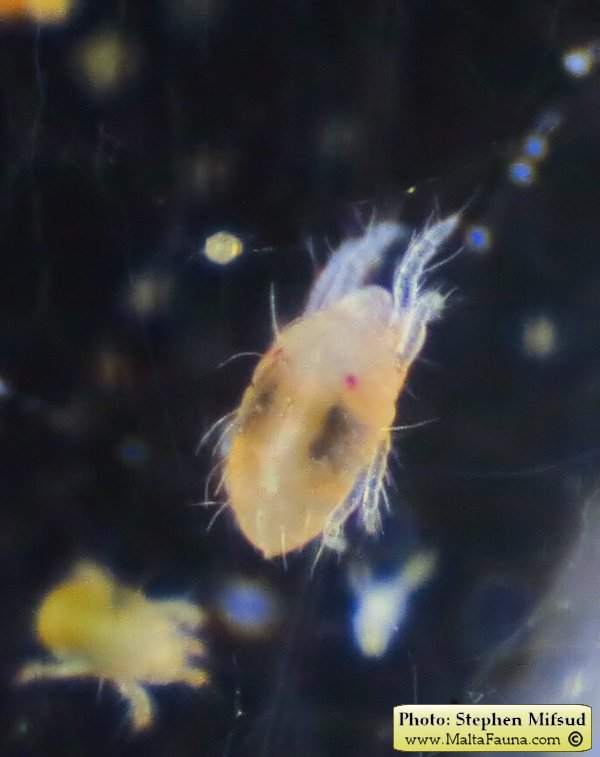  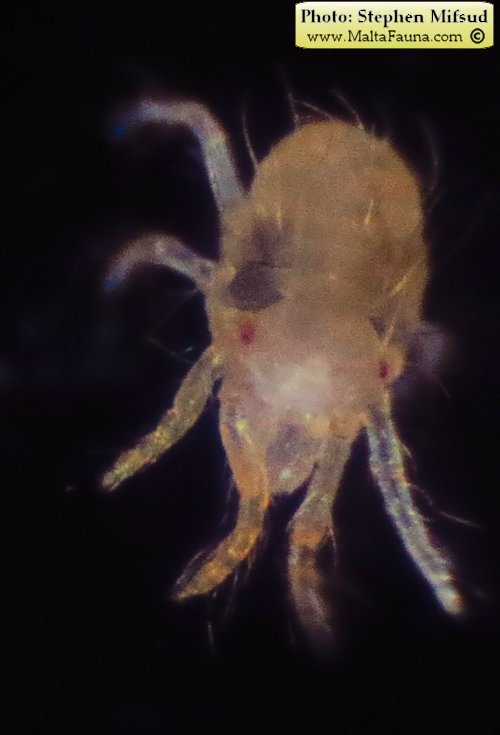 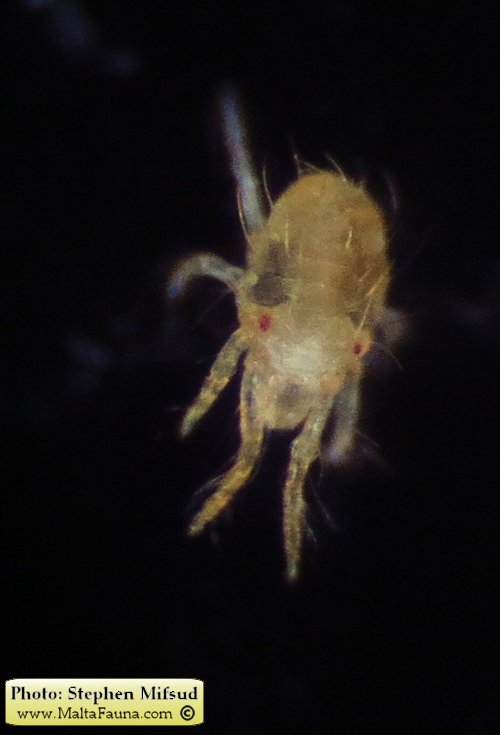 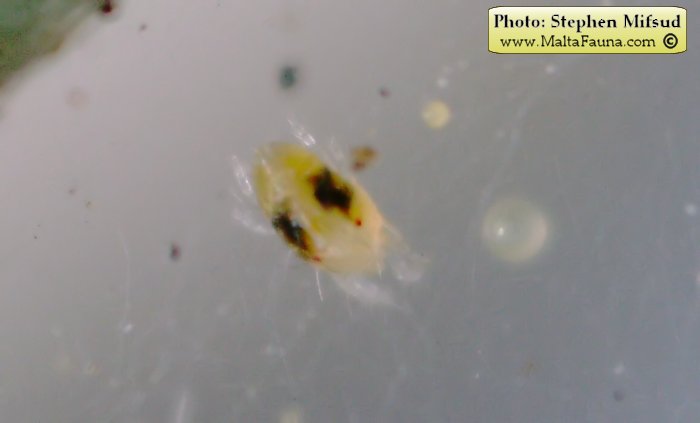 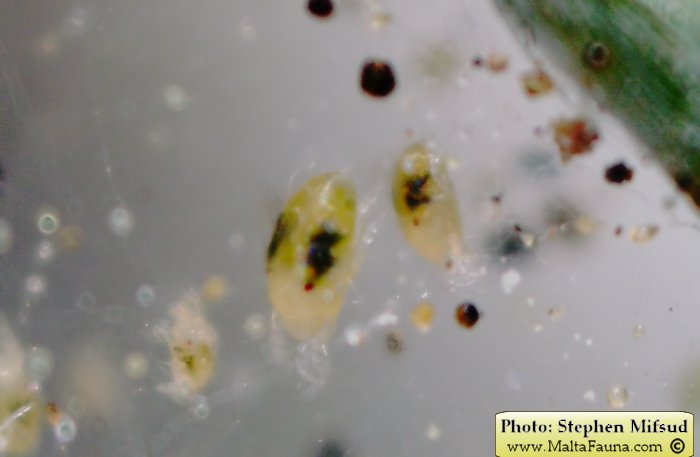 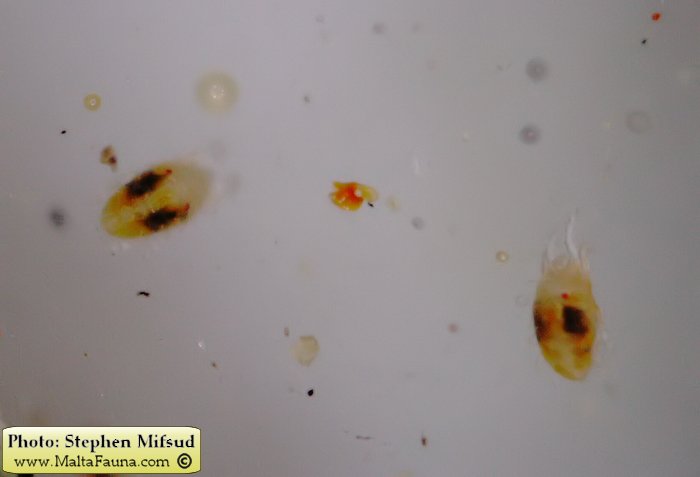  |
| Search for Tetranychus urticae in the following online resources: | |||||
 Search on Google |
 Google Scholar |
 More info on Wikipedia |
 Global Biodiversity |
 NCBI Database |
 Watch on YouTube |
| Other Links and info | ||
| Funghi & Fauna Main Page | Wild Plants Main Index | Close This Window |
|
Image Code: TETR-URT (required to buy images in this page) |
 |
This website needs financial support through sponsors or advertisment - check here . |
| All material and data on this webpage (www.MaltaWildPlants.com) is under the copyright of Stephen Mifsud (2002-2018) | ||||
| This environment and biodiversity awareness website about the flora and fauna of Malta is sponsored by: | ||||
|

